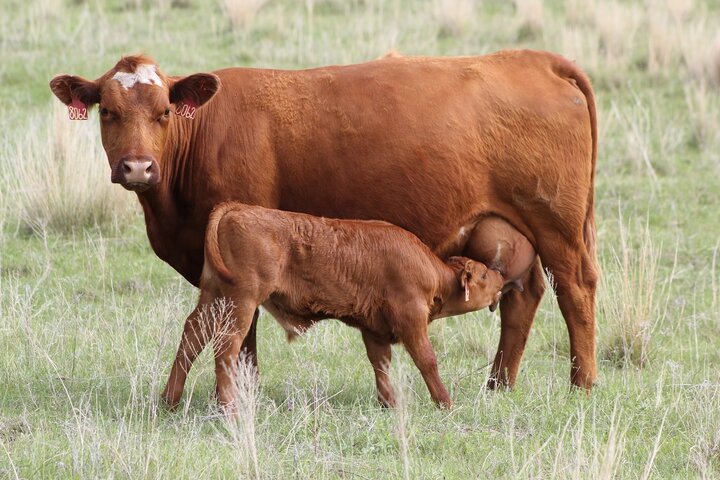Six factors interact to affect farm and ranch profits. The number of production units, production per unit, direct costs, value per unit, mix of enterprises, and overhead costs all interact to determine profitability.
Number of Production Units
The most basic factor affecting profit in any business is the number of production units. This may be acres for the farmer, cows for the rancher, or factories for the industrialist. It doesn’t matter what business you are in, your potential for profit (or loss) is closely tied to your number of production units. If you have an enterprise that is generating $50 of profit per acre and you could double the number of acres, then you would have twice as much profit. Losses, unfortunately, work the same way; more of a loser just loses more.
Production per Unit
The productivity of your land and livestock also has an impact on profit. Productivity is measured in yield per acre, weaned calf crop percentage, and weaning weight for starters. This is an area where farmers and ranchers tend to concentrate. When profitability wanes, it is natural to try to increase productivity. It is important to remember that production per unit is only one factor affecting profitability. It is also hard to increase production without also increasing costs.
Direct Costs
Direct costs are those costs that vary with production. Thus it’s other name: variable costs. These are costs that wouldn’t occur if you did not produce. Seed, fertilizer, feed, and veterinary expenses are all examples of direct costs. Direct costs can be attributed to one or more enterprises. Farmers and ranchers often try to deal with profitability problems by reducing direct costs. Care must be taken however, or a drop in productivity will also result.
Value per Unit
Value per unit (price received) dominates farmer and rancher discussions. Unfortunately we have little control over the prices we receive. We generally accept what the market dictates. Often steps can be taken to move into higher segments of a market, such as certified seed or more timely marketing. This is limited however, and the benefits gained are often at an increased cost.
These first four factors deal with the profitability of individual enterprises. The final two deal with the operation as a whole.
Enterprise Mix
The enterprise mix deals with how enterprises combine to influence overall profits. Different enterprises have different levels of profitability. There are many reasons why farmers and ranchers choose to have several enterprises. Crop rotation demands diversification. Diversification spreads the risk. It can also spread out the workload and decrease peak labor demands. Wise enterprise selection contributes to both long and short-term profitability. Concentrating only on profit in the short run encourages growing what is “hot.” This often increases risk and can jeopardize long-term profits.
Overhead Costs
Overhead costs are those costs that do not vary with production. All costs are either direct or overhead. Overhead includes operator living withdrawal and “killer toys.” Common examples of excessive overhead in traditional agriculture include: expensive tractors, expensive bulls, fancy shops, too much equipment, and excessive family draw. Finding yourself in the predicament of excessive overhead often isn’t due to an extravagant lifestyle. Many producers find themselves with excessive overhead costs when two generations try to make a living from the farm or ranch.
Conclusion
As you can see, none of these factors stand alone as either the problem or the solution. They all work together to determine your profitability. Consider each factor. Examine each cost. Know how cost cuts will affect production before you make the cut. Watch overhead costs, your management can easily become dominated by the need to maintain what you have, rather than the desire to get what you want. If an enterprise is continually unprofitable, then get rid of it, don’t “ride a dead horse.” Carefully consider options. Take an honest look at the productive capability of your land. Trying to get your land to produce above its capability is both expensive and frustrating.
If you take the time to carefully analyze your operation and consider each factor, you will be able to increase your profit. Small changes in each area add up to big changes in your bottom line.

